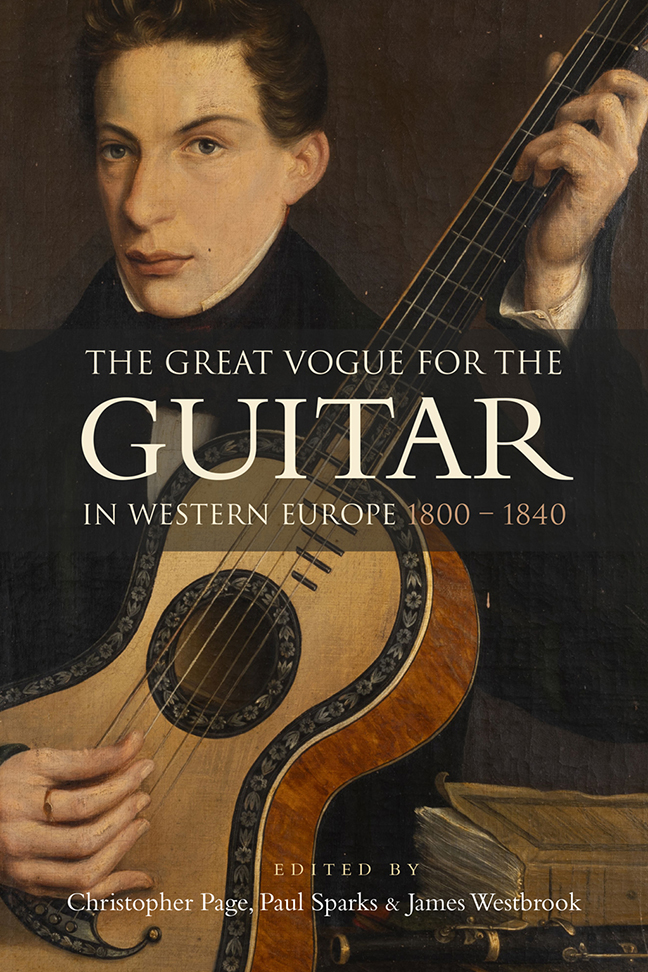Book contents
- Frontmatter
- Dedication
- Contents
- List of Illustrations
- Music examples
- The editors and the contributors
- Foreword
- Acknowledgements
- List of Abbreviations
- Introduction: The Great Vogue for the guitar
- I Contexts
- II The repertoire and its composers
- Appendix: A note on string-making
- Glossary of guitar terms
- Select Bibliography
- Index
Foreword
Published online by Cambridge University Press: 10 January 2024
- Frontmatter
- Dedication
- Contents
- List of Illustrations
- Music examples
- The editors and the contributors
- Foreword
- Acknowledgements
- List of Abbreviations
- Introduction: The Great Vogue for the guitar
- I Contexts
- II The repertoire and its composers
- Appendix: A note on string-making
- Glossary of guitar terms
- Select Bibliography
- Index
Summary
In the 1980s, I fell under the spell of the Baroque guitar, meaning the instrument with five courses of strings, which endured to the threshold of the nineteenth century and in some places beyond. It filled me with wonderment and led me to make numerous recordings. Strumming the music of Spain, Italy or France on a Baroque instrument is unlike sweeping the strings of any other kind of guitar. The light stringing, the thin top, the higher-octave strings on the lower courses (advocated by many Italian and Spanish treatises) and the re-entrant tuning ensure a crystalline sound that is both sensual and seductive. The Baroque guitar is a superb continuo instrument that is often completely misunderstood by non-guitarists; many modern conductors, for example, still confine it to dance music, and insist on what might be called a proto-flamenco sound. Yet the Baroque guitar can also imitate the delicacy of the lute, coupled with campanella (cross-string scales) and stracino (slurred) techniques. It is no wonder that this instrument created its own vogue during the 1600s.
Something magnificent again happened – an epiphany of sorts – when I picked up a Mirecourt guitar made in the early nineteenth century. Since then, I have been fortunate to use instruments by some of the leading nineteenth-century makers including Lacote, Panormo and Stauffer. I had played on a variety of lutes, before this time, so the experience of handling a period instrument was not new to me, but I immediately understood that the nineteenth-century guitar was different from what I had known hitherto. One of the most important divergences from the Baroque instrument was the low sixth or E string. This allowed for a two-octave range between the outer two strings, much like the classic six-course lute, and permitted the guitarist to play the roots of tonic (I), subdominant (IV) and dominant (V) chords in the key of A, using only the unstopped basses, plus other advantageous relationships, again using open strings, in the keys of E (chords I and IV) and D (chords I and V). Another departure from the Baroque instrument was the elimination of double courses; these are replaced by single strings, which are not only easier to keep in tune but make the instrument less expensive to equip. Single strings also allow for a higher tension and a more forceful right-hand action, without the strings rattling against each other.
- Type
- Chapter
- Information
- The Great Vogue for the Guitar in Western Europe1800-1840, pp. xx - xxiPublisher: Boydell & BrewerPrint publication year: 2023



